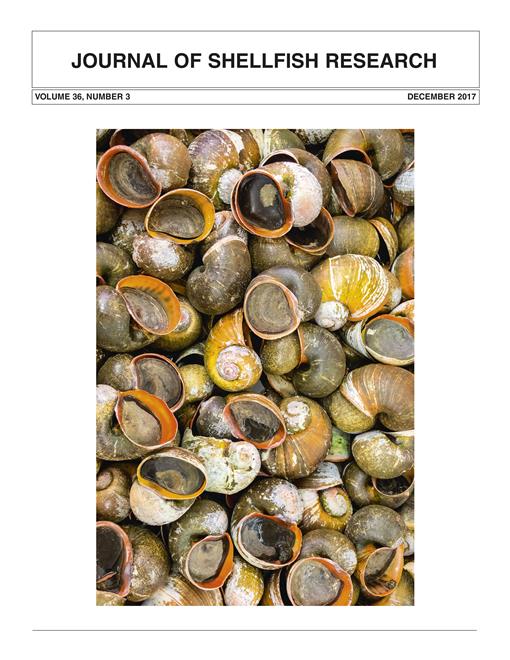Shell dimensions of 588 hatchery-produced Pteria penguin (Röding, 1798) were measured and analyzed to describe morphometric changes in shell form of this species over its life cycle. Oysters ranged from 9.4 to 202.2 mm in dorsoventral height (DVH), 0.1–1,526.9 g in weight and spanned 0.5–5 y of age. Significant positive curvilinear relationships were observed between shell width (SW) and DVH (R2 = 0.99, P < 0.001), diagonal length (DL) and DVH (R2 = 0.99, P < 0.001), shell thickness (ST) and DVH (R2 = 0.98, P < 0.001), and wet weight (WW) and DVH (R2 = 0.99, P < 0.001). Trends in the morphometric ratios of P. penguin indicated a proportional decrease in SW and DL with increasing DVH, resulting in a shift from a horizontally elongate to a vertically elongate shell form. The ST of P. penguin remained proportionally stable over its life cycle, whereas its WW increased proportionally by more than two orders of magnitude. Based on the results of this study, future research should examine (1) the relationship between the external shell dimensions and internal nacreous area, (2) changes in nacre deposition rate in different shell locations, and (3) the relationship between soft tissue weight, shell weight, nacre thickness, and DVH of P. penguin. The description of the growth form of P. penguin represents an important first step toward determining optimum half-pearl (mabé) culture procedures for P. penguin in Tonga.
How to translate text using browser tools
1 December 2017
Morphometric Relationships and Shell form of Cultured Winged Pearl Oysters (Pteria penguin) in Tonga
Sophie E. Gordon,
Poasi Ngaluafe,
Max Wingfield,
Paul C. Southgate
ACCESS THE FULL ARTICLE

Journal of Shellfish Research
Vol. 36 • No. 3
December 2017
Vol. 36 • No. 3
December 2017
mabé
Morphometrics
pearl oyster
pearl production
Pteria penguin
shell dimensions
Tonga




